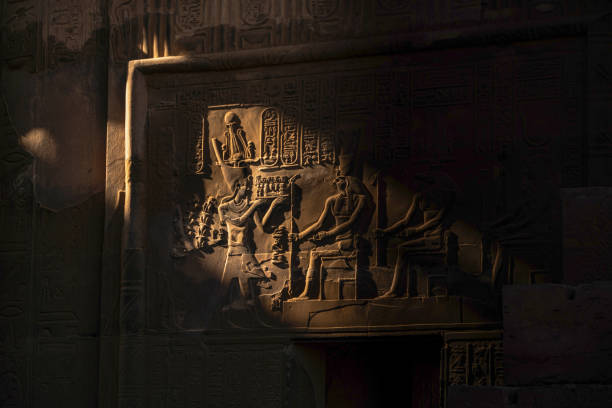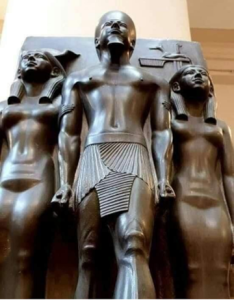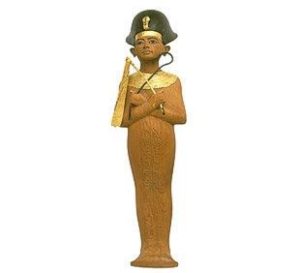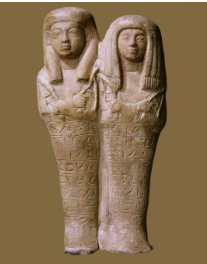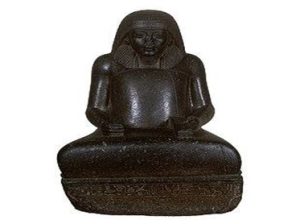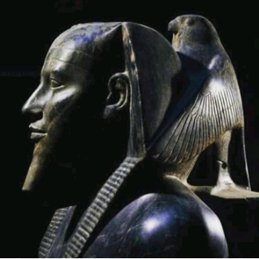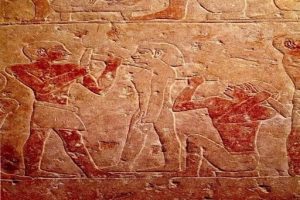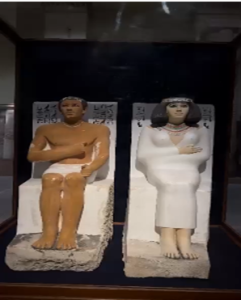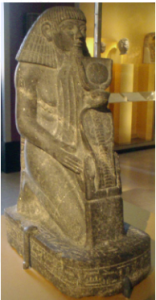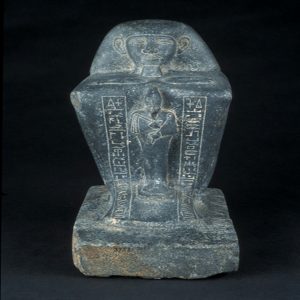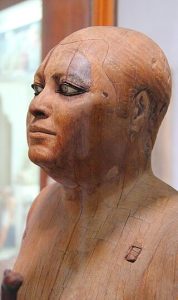Sculpture in Ancient Egyptian Life
Sculpture stands as the second pillar of art, alongside painting. It can be categorized into: Sunk Relief: This technique involves carving into a smooth surface using chisels to create a depth of several millimeters around the drawing. Sunk relief served two primary purposes: writing and depicting scenes featuring individuals. Raised Relief: In this technique, chisels are used to carve around the intended image, causing it to protrude above the surface of the wall. Sculpture served both religious and political purposes. Political sculptures, such as those commemorating the Sed festival (the king’s coronation), depicted the pharaoh as strong and courageous. Religious sculptures, on the other hand, often portrayed the king in a state of reverence towards the gods, emphasizing his divine status.
Menkaure, Hathor, and the goddess of the 17th region of Upper Egypt (image of the three statues)
Statue of King Thutmose III, New Kingdom, 18th Dynasty
The Significance of Statues in the Ancient Egyptian Afterlife
For the ancient Egyptians, a statue was a representation that the soul would recognize in the afterlife. This belief was so deeply rooted that they placed statues in tombs, ensuring that the soul would have a physical form to inhabit. The Egyptians feared that without a recognizable statue, the soul would be lost and the mummified body would remain lifeless. (Because the Egyptian feared that the mummies would be stolen, he considered the statue in the cemetery a substitute for the mummy Some scholars believe that this belief stemmed from the experience of losing loved ones to the Nile River. When a person drowned, their body might not be recovered, leading to the question of how the soul could find its way in the afterlife without a physical form. To address this, the Egyptians began creating statues as stand-ins for the deceased.
Shabti Statues
Shabti statues, small figurines often found in tombs, were believed to represent the days of the year (365 statues in total). Their purpose was to act as servants for the deceased in the afterlife. The Egyptians imagined that the deceased would be called upon to perform various tasks in the afterlife, and the shabti statues would respond on their behalf.
Shabti of King Tutankhamun, New Kingdom, in the Egyptian Museum
A rare shabti statue depicting a man named Khaemwaset and his wife Mesyt in a single piece is a testament to their love in both this world and the afterlife. This statue can be found at the Metropolitan Museum of Art in America.
The skill of the ancient Egyptian artist is evident in their ability to work with the hardest types of stone. They did not limit themselves to easily shaped stones like sandstone and limestone, but also tackled the most challenging ones, such as diorite (for example, the statue of Khafra), schist (for example, the statues of Thutmose III and Psamtik), and granite
A statue of King Psamtik I from the 26th Dynasty, made of schist
A statue of King Ramesses I as a scribe during the New Kingdom, 18th Dynasty, made of granite
A diorite statue of King Khafre from the Fourth Dynasty, located in the Egyptian Museum
Carving Tools of Ancient Egyptians
The ancient Egyptians used a variety of tools for carving, including chisels for breaking down wood and hard materials, hammers, saws, elephant tusks, knives, and drills. -Wall paintings from the mastaba of Ti in Saqqara, dating back to the 5th Dynasty, depict two sculptors at work
Statues of High-Ranking Officials
Statues were often created for individuals and placed in their tombs. Examples include the statues of Rahotep and Nofret from the Old Kingdom, as well as the statue of Kagmni.
The statue of Rahotep and Nofret from the Old Kingdom is currently housed in the Egyptian Museum.
However, from the beginning of the New Kingdom onwards, some individuals were allowed to place their statues in temples. A notable example is the statue of Senenmut, the architect of Hatshepsut’s temple and tutor to her daughter.
The statue of Senenmut, the architect of Hatshepsut’s temple, is also located in the Egyptian Museum.
Block Statues
Given the absence of statues in the great temples of gods like Karnak and Luxor, the priests created what is known as the block statue. A distinguishing feature of these statues is their monolithic form, which protected them from breakage. This form also provided a large surface area for inscriptions, and their presence within a temple conferred upon them a sense of sanctity and eternal existence. The inscriptions found on some of these statues were essentially prayers for the deceased, ensuring that their memory would endure in the divine realm.
One of the block statues of a high-ranking official, discovered in the Deir el-Bahri cache and now housed in the Egyptian Museum
Wooden Statues
Among the most impressive works created by Egyptian artists were individual wooden statues. These served the same religious purpose as stone statues but their presence indicated the wealth of the tomb’s owner, as wood was a rare commodity in Egypt. One of the most remarkable wooden statues from the Old Kingdom is that of Kaaper, discovered in Saqqara and now housed in the Egyptian Museum. A humorous anecdote is associated with its discovery: when Mariette excavated it in Saqqara, the workers exclaimed, “The village elder! The village elder!” and fled in terror. This was because they believed the statue represented a real person, the village elder of their time (around 1860 AD), due to its lifelike appearance. This incident highlights the exceptional skill of the ancient Egyptian artists. -A wooden statue of a village elder “Kaaper” from the Old Kingdom period, found in the Egyptian Museum

